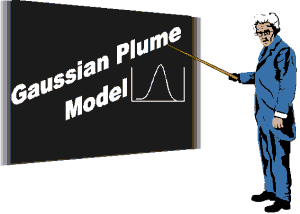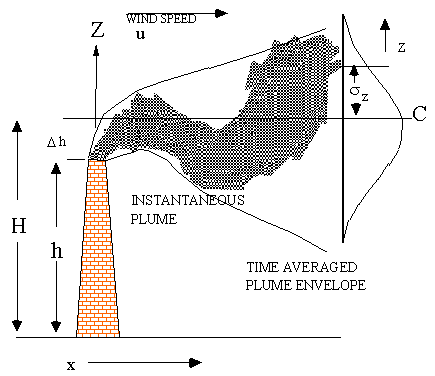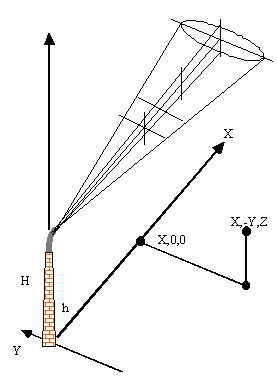| Application of the Gaussian Plume Model | |
|
|
|
 |
|
| The first thing we need to realise is what it is that these plume dispersion models are predicting. We should consider the mechanism of dispersion, turbulent diffusion and realise that although there will be a dispersion in space, through molecular diffusion processes enhanced by turbulent stretching of the plume there will be a dispersion with respect to time. At some times the high concentration part of the plume will impinge on a particular point and at other times it will not. Turbulence will move the plume around and thus to a observer at any particular point the values observed will depend on the averaging period of the measurements. Both theoretical and semi- empirical approaches to the model assume a reasonable averaging time. We thus see that the models make predictions of the time averaged plume envelope rather than the instantaneous plume boundary. | |
 |
|
|
The consequences of this are that a concentration predicted by a model will be an average. For pollutants that have a very short-term effect this may not be satisfactory since the extreme high portions of the population of concentrations experienced may well be high enough to harm a sensitive receptor. As discussed above a Gaussian model assumes normal distribution of concentrations within plume envelope brought about by turbulent mixing and theoretically explained by either a diffusive or statistical approach. The assumptions made by the basic versions of the model are:
In many cases it also assumes flat open terrain. - Dealing with rough terrain (in particular urban conditions) will be considered next. |
|
 |
|
| The above diagram shows the 3D co-ordinate system with the stack at the origin which is based in the application of the model. We only need consider concentrations at z=0 i.e. ground level effects an earlier we showed briefly the origin (or one of them) of the basic gaussian plume model. | |